The present façade of this pub was built in the late 1960s. Davey’s Dairy was demolished to make way for Tesco’s expansion. George Davey’s well-known dairy had been on this site since the end of the 19th century. In the 1901 census, he was recorded as a ‘dairyman’, living and working at 16 High Street.
A plaque documenting the history of The Dairyman.
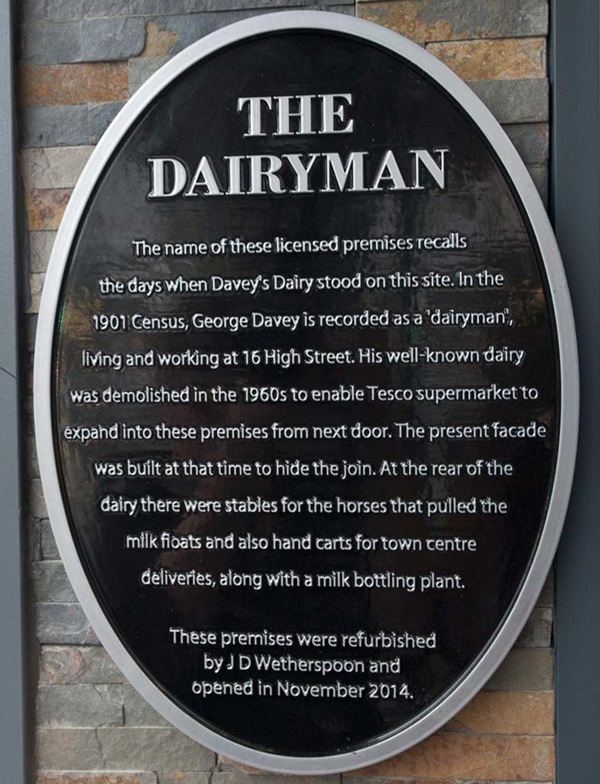
The plaque reads: The name of these licensed premises recalls the days when Davey’s Dairy stood on this site. In the 1901 Census, George Davey is recorded as a ‘dairyman’, living and working at 16 High Street. His well-known dairy was demolished in the 1960s to enable Tesco supermarket to expand into these premises from next door. The present façade was built at that time to hide the join. At the rear of the dairy there were stables for the horses that pulled the milk floats and also hand carts for town centre deliveries, along with a milk bottling plant.
Photographs and text about The Dairyman.
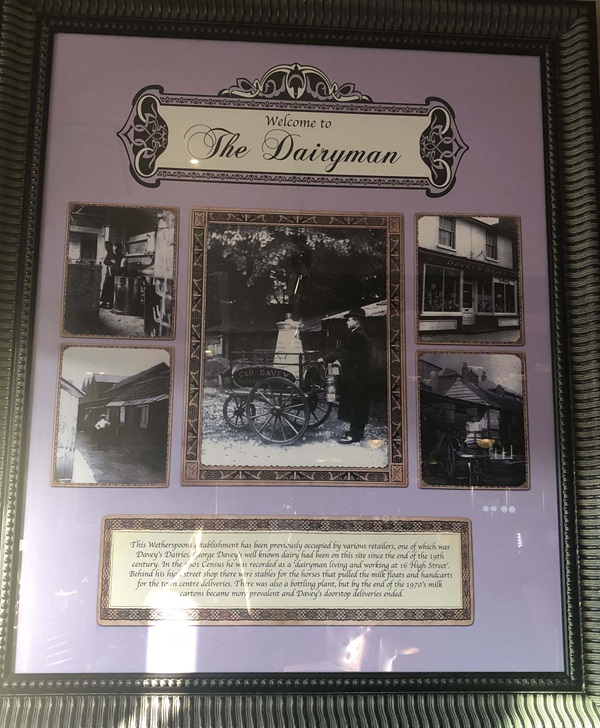
The text reads: This Wetherspoon establishment has been previously occupied by various retailers, one of which was Davey’s Dairy. George Davey’s well known dairy had been on this site since the end of the 19th century. In the 1901 Census he was recorded as a ‘dairyman’ living and working at 16 High Street’. Behind his High Street shop there were stables for the horses that pulled the milk floats and handcarts for the town centre deliveries. There was also a bottling plant, but by the end of the 1970’s milk cartons became more prevalent and Davey’s doorstep deliveries ended.
A print and text about World War II.
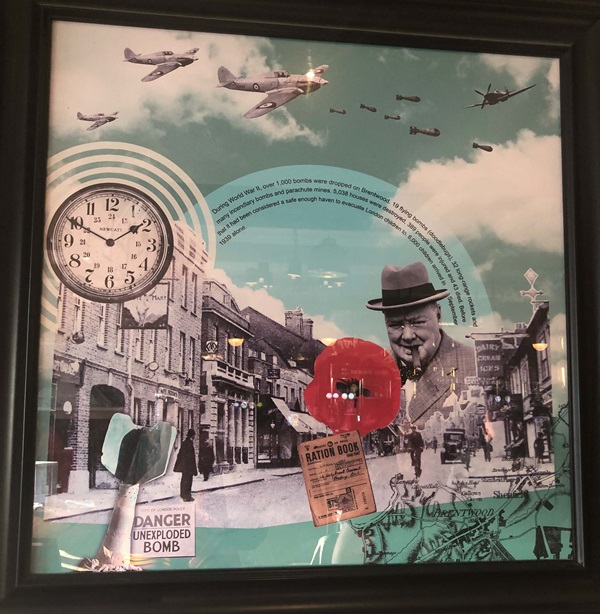
The text reads: During World War II, over 1,000 bombs were dropped on Brentwood. 19 flying bombs (doodlebugs), 32 long-range rockets and many incendiary bombs and parachute mines. 5,038 houses were destroyed, 389 people were injured and 43 died. Before that it had been considered a safe enough haven to evacuate London children to 6,000 children arrived in September.
A photograph and text about The White Hart Inn.
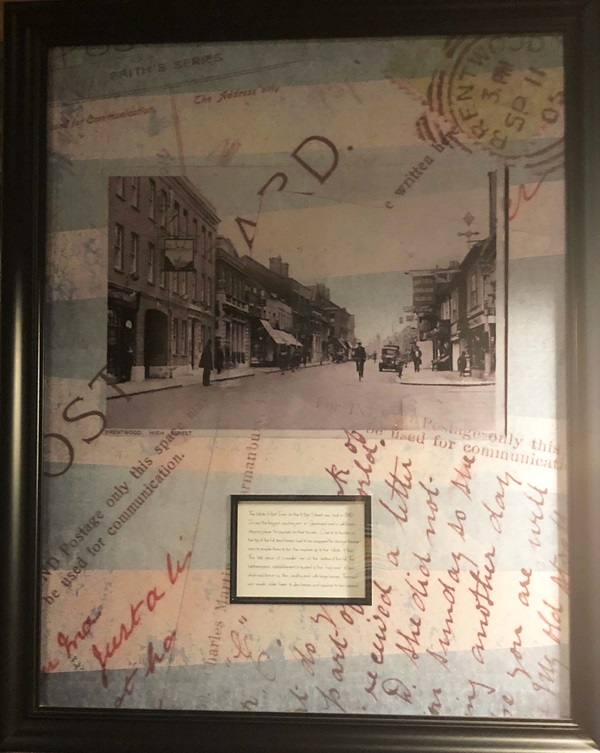
The text reads: The White Hart Inn on the high street was built in 1840. It was the biggest coaching inn in Brentwood and a well-known stopping place for coaches on their travels. Due to its location at the top of the hill, tired horses had to be swapped for stronger fresher ones to enable them to tow the coaches up to the White Hart. This took place at a smaller inn at the bottom of the hill. This Wetherspoons establishment is located at the ‘high end’ of town, which was known as the wealthy end with large houses. The road was made wider here to allow horses and coaches to turn around.
External photograph of the building – main entrance.
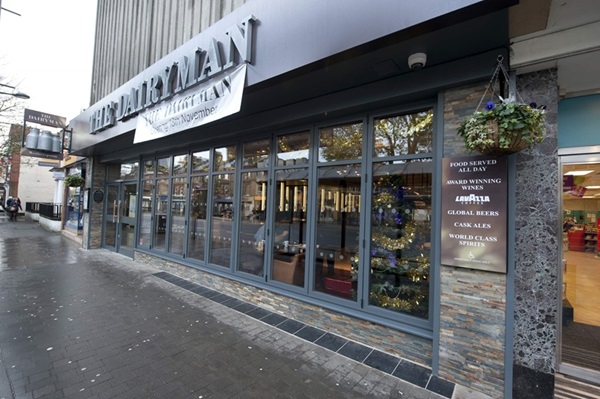
If you have information on the history of this pub, then we’d like you to share it with us. Please e-mail all information to: pubhistories@jdwetherspoon.co.uk